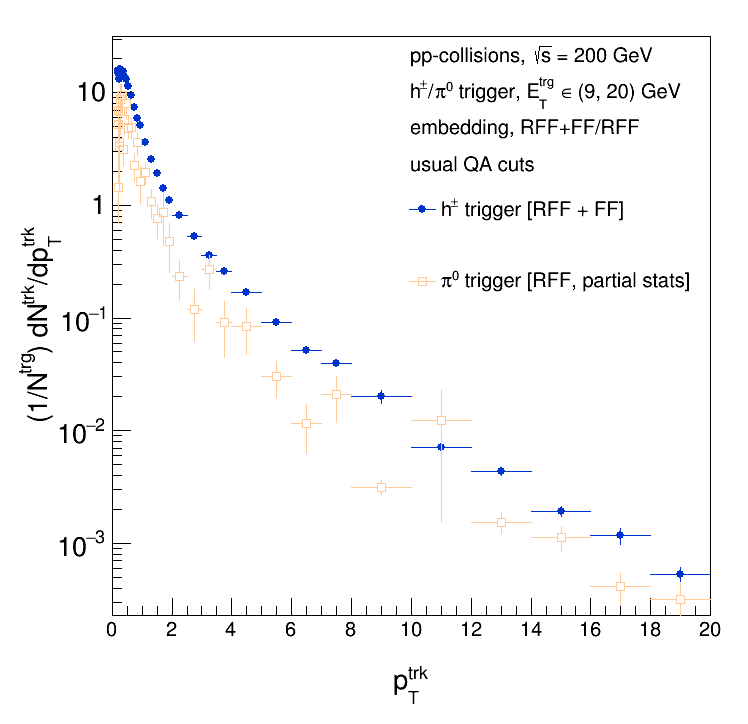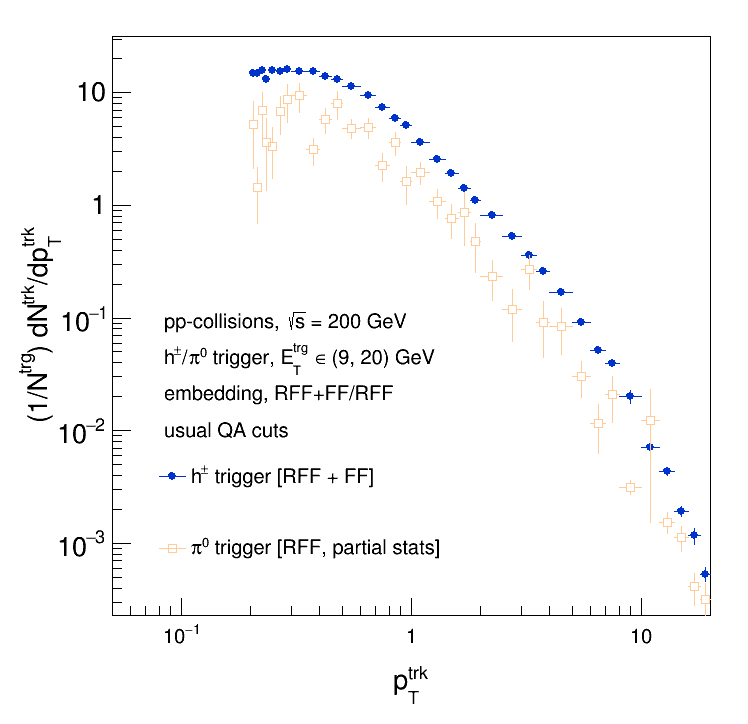Update 03.08.2019 -- Run 9 embedding: pi0- vs. hadron-triggered pTtrk distributions
The plot continues to thicken surrounding the tracking efficiency mystery. This time around, I'm investigating whether or not there's a physics difference between pi0 and charged hadron triggers. The previous posts can be found in the link below.
https://drupal.star.bnl.gov/STAR/blog/dmawxc/update-02272019-run-9-pp-efficiency-episodes
The difference between our Pythia8 simulation and the Run9 dijet embedding sample we've been using might be due to the difference in triggers. In the Pythia8 sample (and in data) I utilize pi0 triggers, but I utilize charged hadron triggers in the embedding sample in order to enhance statistics. The plots below compares the pTtrk distributions (over the whole delta-phi range).


Which is a substantial difference... I had very few pi0 triggers to work with, so statistics might play a role in the difference.
[Update 03.28.2019] The difference between the two looks like an offset in the y-axis, right? Right. I used the wrong scale factors when I was calculating the pi0 spectrum.
- dmawxc's blog
- Login or register to post comments
